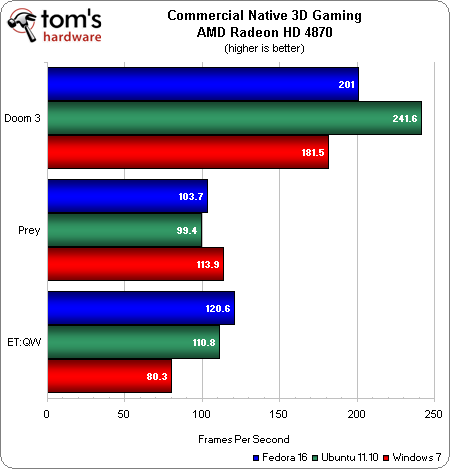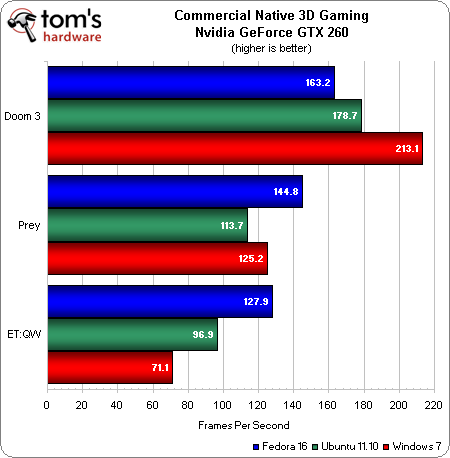Fedora 16 And GNOME Shell: Tested And Reviewed
Ubuntu and Mint don't want it; Linus called it an “unholy mess.” While most other distros are passing up or postponing GNOME Shell, Fedora is full steam ahead. Does Red Hat know something the rest of us don't? Or is GNOME 3 really as bad as everyone says?
Benchmark Results: Games, AMD And Nvidia
All games are run three times with full details enabled at a resolution of 1920x1080.
AMD
Ubuntu 11.10 leads the pack in Doom 3 with nearly 250 FPS, followed by Fedora 16 at 200 FPS and Windows 7 at 180 FPS. The placing changes in Prey, with Windows establishing a ten-frame lead over Verne and 14 FPS advantage over Oneiric Ocelot. Fedora owns in Enemy Territory: Quake Wars with a ten-frame lead over Ubuntu and a 40 FPS advantage over Windows.
Nvidia
With the Nvidia card, Windows outperforms both Linux distros in Doom 3 by more than 30 FPS.
The frame rates are higher in Prey compared to AMD's card, and Fedora manages to take the lead at 145 FPS, followed by Windows at 125 FPS and Ubuntu at 114 FPS. Fedora is the only operating system that doesn't suffer a performance drop in Quake Wars with the GeForce GTX 260, earning nearly 130 FPS. Ubuntu claims a second-place victory over Windows by roughly the same margin as the Radeon HD 4870.
Get Tom's Hardware's best news and in-depth reviews, straight to your inbox.
Current page: Benchmark Results: Games, AMD And Nvidia
Prev Page Benchmark Results: Unigine, AMD And Nvidia Next Page Benchmark Analysis: Fedora Versus Ubuntu And Windows
